Bathroom Readers' Institute's Blog, page 161
September 16, 2013
Weird Holiday: Stay Away From Seattle Day
How to celebrate: visit Seattle. Wait, no…do not visit Seattle.
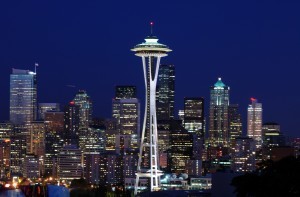 If you were thinking of visiting the ancestral homeland of Starbucks, grunge music, and Fremont Troll on September 16, you’re going to have to change your plans. That’s because that day is Stay Away From Seattle Day.
If you were thinking of visiting the ancestral homeland of Starbucks, grunge music, and Fremont Troll on September 16, you’re going to have to change your plans. That’s because that day is Stay Away From Seattle Day.
Believe it or don’t, this strange “holiday” is real, and actually celebrated by many residents in Seattle, America’s rainiest big city. Much like the citizens of its almost-as-rainy and insular rival city of Portland, Seattleites love sharing their city and economy with visitors…but they love them even more when they leave.
But the ironic part is that Stay Away From Seattle Day was created by somebody who didn’t live in Seattle, or had ever even visited the city. According to Seattle TV station King 5, the holiday was invented by Tom Roy, a comedian from Pennsylvania, who, as of 2011, has never visited Seattle. Roy was inspired by a Time Magazine story about the efforts of Seattle civic leaders to prevent overcrowding. His goal with the holiday was to poke fun at paranoid politicians, but the holiday has since caught on with plenty of frustrated Seattleites.
Keeping the tide of tourists and new residents at bay could be tough, especially considering that Washington recently legalized marijuana. Nevertheless, you may want to head elsewhere if you’ll be visiting the Evergreen State soon. Might we suggest swinging by Forks, Washington instead? This weekend they’re hosting an annual festival in honor of the birthday of Twilight’s Bella Swan. Similar to Tom Roy, Twilight author Stephanie Meyer had never visited Forks, Washington, when she chose to set her teen vampire novels there—she just liked that it was rainy.
September 13, 2013
Three Canadian Inventions You Can’t Live Without!
How have you lived this long without poop paper? Here are three Canadian inventions you can’t live without. Are we right? Or are we right?
 Snow Cone Snowstorm Mask. Invented in Montreal in 1939. Picture a transparent plastic cone—sort of like a small traffic cone—on your face (the point sticking straight out from your face), with a strap that goes around the back of your head to hold it on. This, the inventor believed, would protect your face during especially bad Quebec snowstorms.
Snow Cone Snowstorm Mask. Invented in Montreal in 1939. Picture a transparent plastic cone—sort of like a small traffic cone—on your face (the point sticking straight out from your face), with a strap that goes around the back of your head to hold it on. This, the inventor believed, would protect your face during especially bad Quebec snowstorms.
Mechanical Skirt Lifter. Invented by a woman (name unknown), in Calgary in 1890, this device was meant to aid women who wore the big poofy skirts popular in the Victorian era. The device, which was made of metal, consisted of two clips on either end of a chain. One clip attached to the skirt’s waist, the other to the hem. When a woman had to cross a muddy road, or climb some steps, or found herself in some similar situation in which her skirt hem might become dirty or be in the way, she could pull the chain and put one of its links on a hook hear the waist, thus holding up the hem of her skirt.
Poop Paper. In 1997 primary school teacher Cyndi Foster of Cambridge Bay, Nunavut, and Evelyn David, a paper maker from Edmonton, Alberta, developed a way to make sheets of paper using scraps of recycled paper…and boiled muskox poop. Muskox poop, it turns out, is really good for making paper, because the muskox diet is so fibrous. “You couldn’t, for instance, use cow poop,” David told the Northern News Services, “because it doesn’t have the same woody fiber content as muskox poop.” Foster made her poop paper right in her classroom with her grade 4 and 5 kids. And they collected the muskox poop from the area’s wild muskox themselves. (They sold some sheets of their homemade poop paper, but mostly just used it themselves.)
Want more weird inventions? Check out Uncle John’s Bathroom Reader Weird Inventions.
September 12, 2013
Poet James McIntyre: The Chaucer of Cheese
Raise your hand if you like cheese! Wow…if we are counting correctly, that’s millions and millions of people. Poet James McIntyre loved cheese. Here is his story, as published in Uncle John’s Funniest Ever Bathroom Reader.
The Chaucer of Cheese
Have you heard of one James McIntyre?
His unusual verses set the world afire.
Think of this while eating your Cheerios:
In the 1800s, he was the bard of southwestern Ontario. His work is published this day still,
If you read his poems, they’ll make you ill.
James McIntyre (1827–1906), known to his admirers as the “Chaucer of Cheese,” was born in the Scottish village of Forres. He moved to Canada when he was 14 and lived most of his life in Ingersoll, a small town in Ontario, where he worked as a furniture and coffin maker. But what earned him his reputation was his hobby—writing poetry. McIntyre wrote poems on a variety of topics: He described Ontario towns, saluted his favorite authors, and sang the praises of farming and country life. He even composed tributes to his furniture.
WHAT RHYMES WITH GOUDA?
Most famously, he wrote poems to promote the local economy. And in the mid-1800s, the economy of southwestern Ontario was cheese. In 1866, for example, Ontario dairy farmers produced what was then the world’s largest block of cheese—it measured more than 21 feet across and weighed 7,300 pounds. The giant inspired two of McIntyre’s best-known poems: “Ode on the Mammoth Cheese” and “Prophesy of a Ten Ton Cheese.”
When the Toronto Globe printed some of his work, including such poems as “Oxford Cheese Ode,” “Hints to Cheesemakers,” “Dairy Ode,” and “Fa- ther Ranney, the Cheese Pioneer,” his fame spread across Canada and then around the world. What makes McIntyre’s poetry fun to read isn’t just his choice of subject matter (cheese) or his weird rhymes (pairing “fodder” with “cheddar,” or “shoes Norwegian” with “narrow toboggan”). “If you read his poetry, what comes out is his enthusiasm,” said Michael Hennessy, mayor of Ingersoll. “People might say they are terrible poems, but McIntyre was a trier, and that is a great quality in a writer.”
WHO IS THE WORST?
Giving new meaning to the term cheesy, many of McIntyre’s admirers argue that he, not Scotland’s infamous William McGonagall, deserves the title of World’s Worst Poet. But McGonagall’s fans steadfastly disagree. “McGonagall is by far the worst poet in the English language,” said Scottish poet Don Paterson. “He could write a bad poem about anything. This cheese guy may be a bad poet, but it seems he could write bad poetry about only one subject.”
A MCINTYRE SAMPLER
A few excerpts from our favorite McIntyre poems:
“Hints to Cheesemakers”
All those who quality do prize
Must study color, taste and size,
And keep their dishes clean and sweet,
And all things round their factories neat,
For dairymen insist that these
Are all important points in cheese.
Grant has here a famous work
Devoted to the cure of pork,
For dairymen find it doth pay
To fatten pigs upon the whey,
For there is money raising grease
As well as in the making cheese.
“Dairy Ode”
Our muse it doth refuse to sing
Of cheese made early in the spring.
When cows give milk from spring fodder
You cannot make a good cheddar.
The quality is often vile
Of cheese that is made in April,
Therefore we think for that reason
You should make cheese later in the season.
Cheese making you should delay
Until about the first of May.
Then cows do feed on grassy field
And rich milk they abundant yield.
Utensils must be clean and sweet
So cheese with first class can compete,
And daily polish up milk pans,
Take pains with vats and with milk cans.
And it is important matter
To allow no stagnant water,
But water from pure well or stream
The cow must drink to give pure cream.
Though ’gainst spring cheese some do mutter,
Yet spring milk also makes bad butter,
Then there doth arise the query How to utilize it in the dairy.
For more of McIntyre’s poems, see page 102 of Uncle John’s Funniest Ever Bathroom Reader.
September 11, 2013
The Big Hunt for Bigfoot
Better living through Sasquatch-hunting technology.
“Drones” are seemingly everywhere these days (look out!). These controversial “unmanned aerial vehicles” are currently being used for military missions, surveillance, and even domestic policing. But drones aren’t just the possible progenitors of an Orwellian future. Their use is being explored in forest fire prevention, pizza delivery, and video tours. 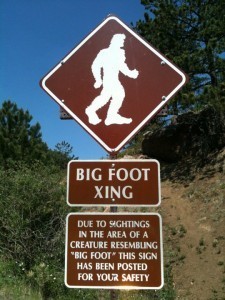 Another possible use: in the big hunt for bigfoot. Jeffrey Meldrum, an anthropology professor at Idaho State University, along with entrepreneur William Barnes, are spearheading a project that will use an innovative new type of drone to search for evidence that Bigfoot actually exists. They call their undertaking “The Falcon Project.” Barnes and Meldrum hope to find enough funding to build the Aurora Mk II, an unmanned, 45-foot-long airship equipped with thermal-imaging equipment and high-resolution cameras. It should be just the tool to scour the forests of the Pacific Northwest day and night, tracking Bigfoot, and, should it find one, take a picture. Unlike more conventional drones, their ship will be quieter and stealthier so as not to scare away their targets. The Aurora Mk II will also be able to travel at speeds of up to 45 mph. The team hopes to launch the ship next year and start sending it on nighttime runs over reputed Bigfoot hotspots around the United States. Over the years, there have been dozens of amateur films that claim to contain footage of real-deal sasquatches—but nothing has ever been confirmed. Earlier this year, however, a couple hiking in British Columbia captured a fairly convincing video of what may (or may not) be one. Meldrum, the author of the book Sasquatch: Legend Meets Science, thinks that the airship is the next logical step in the ongoing search for more definitive evidence of the elusive creatures. Want more—and even weirder—inventions? Check out Uncle John’s Weird Inventions.
Another possible use: in the big hunt for bigfoot. Jeffrey Meldrum, an anthropology professor at Idaho State University, along with entrepreneur William Barnes, are spearheading a project that will use an innovative new type of drone to search for evidence that Bigfoot actually exists. They call their undertaking “The Falcon Project.” Barnes and Meldrum hope to find enough funding to build the Aurora Mk II, an unmanned, 45-foot-long airship equipped with thermal-imaging equipment and high-resolution cameras. It should be just the tool to scour the forests of the Pacific Northwest day and night, tracking Bigfoot, and, should it find one, take a picture. Unlike more conventional drones, their ship will be quieter and stealthier so as not to scare away their targets. The Aurora Mk II will also be able to travel at speeds of up to 45 mph. The team hopes to launch the ship next year and start sending it on nighttime runs over reputed Bigfoot hotspots around the United States. Over the years, there have been dozens of amateur films that claim to contain footage of real-deal sasquatches—but nothing has ever been confirmed. Earlier this year, however, a couple hiking in British Columbia captured a fairly convincing video of what may (or may not) be one. Meldrum, the author of the book Sasquatch: Legend Meets Science, thinks that the airship is the next logical step in the ongoing search for more definitive evidence of the elusive creatures. Want more—and even weirder—inventions? Check out Uncle John’s Weird Inventions.
September 10, 2013
The “Hidden Toilet” at Drum Castle
Uncle John’s ancestral homeland might just be Scotland. Check out the recently discovered Drum castle toilet.
 Toilets were developed around the world, independently, thousands of years ago, but archaeologists keep finding older and older prototypes in Scotland. One of the oldest was found by archaeologists in the 1850s at Skara Brae, an ancient settlement on Mainland, the largest of the Orkney Islands off the coast of Scotland. Several stone huts among the ruins contained drains that extended outside their walls. Historians believe that the huts, which date back to 3,000 BC, were one of the first, if not the first, indoor bathrooms on Earth.
Toilets were developed around the world, independently, thousands of years ago, but archaeologists keep finding older and older prototypes in Scotland. One of the oldest was found by archaeologists in the 1850s at Skara Brae, an ancient settlement on Mainland, the largest of the Orkney Islands off the coast of Scotland. Several stone huts among the ruins contained drains that extended outside their walls. Historians believe that the huts, which date back to 3,000 BC, were one of the first, if not the first, indoor bathrooms on Earth.
And this year, archaeologists working to preserve Drum Castle near Aberdeen discovered two “secret chambers” within its walls that date back to the 13th century. One of them contained a guarderobe—a medieval commode—complete with a wooden seat. In those days, a throne like this one would have been considered cutting-edge and truly worthy of a nobleman, or somebody who could sit in an actual throne (the castle served as the “seat” for the Chief of Clan Irvine). Back then, indoor plumbing was still rudimentary by today’s standards and few people in the region had access to latrines.
And here’s the best part. The toilet was hidden by a construction addition from the 1800s—bookshelves.
September 9, 2013
Team Name Changes
To celebrate the launch of a new NFL season, here is a sneak peek into our newest title with a sports-themed story about team name changes throughout history. Story will soon appear in Uncle John’s Perpetually Pleasing Bathroom Reader.
Name Changers
Meet the new team, same as the old team—just with a different name.
The Tennessee Titans weren’t the first Titans in pro football. the first were the New York Titans, a charter member of the American Football League (later absorbed by the NFL) in 1960. The name was a wry reference to the New York Giants of the NFL—in mythology, titans are bigger, stronger, and tougher than giants. the name only lasted for three years. By then the team was playing in brand-new Shea Stadium, located directly beneath the flight paths of two major airports, LaGuardia and JFK, hence the new Jets. (It also rhymed with the name of Shea Stadium’s other team, baseball’s New York Mets.)
Tampa Bay Devil Rays
After more than a decade of trying to persuade major league Baseball for an expansion team, Tampa Bay finally got one in 1995, to begin play in 1998. Owner Vince Naimoli wanted to name his team the Sting Rays, after the sea creatures that populate the ocean near tampa. But the name was already in use by the minor-league Maui Stingrays, and Naimoli refused to pay the relatively paltry $35,000 it would have cost to get the rights. so he took suggestions from the community, and out of 7,000 entries, he picked the Devil Rays. almost immediately, the team began receiving complaints from people who felt the name celebrated satan. so Naimoli commissioned a telephone poll: should he name the team “Devil Rays” or “Manta Rays”? Devil Rays won, so the name stuck. So did the complaints. In 2007, Naimoli formally dropped “Devil” from the name.
New York Highlanders
The New York Yankees are the most storied team in pro baseball, but they weren’t always in New York. In 1903, the original Baltimore Orioles franchise moved to New York City and changed their name to the New York Highlanders. to avoid confusion with the other local team, the Giants of the National League, sportswriters gave the Highlanders a nickname: “the Americans,” because they were in the American league. That’s a long word to fit into headlines—which is why New York Press editor Jim price started calling them the “Yanks” or “Yankees.” It caught on, and the name was officially changed in 1913.
New Orleans Hornets
The Charlotte Hornets of the NBA moved to New Orleans in 2002, after owner George Shinn made good on a threat to take them away if the city didn’t build him a new arena. Tom Benson, owner of the NFL’s New Orleans Saints, bought the team in 2012 and wanted to change the name to something more local. (Hornets are native to the Carolinas; they’re not widely found in the Bayou.) He approached the owners of the Utah Jazz, which in 1979 had moved from New Orleans, an important city in jazz history, to Salt Lake City, not an important city in jazz history. The Jazz refused to give the name back, so after considering “Brass,” Benson announced a , named after Louisiana’s state bird.
The Charlotte Bobcats
When the Hornets moved to New Orleans after 14 seasons in Charlotte, feelings were mixed. the team’s owner, George Shinn, was controversial and many people in Charlotte were glad to see him go. But the city was still a big basketball market, so the NBA publicly promised Charlotte a new team. And later that year it got one, with an ownership group originally led by BET Network founder Robert Johnson and now led by former NBA superstar Michael Jordan. Since beginning play in 2004, the Bobcats (the name was selected in a “name the team” contest) have brought in huge crowds—but no playoff appearances. looking for a new start in 2012, . Well, an old new name, really: the Charlotte Hornets, which they grabbed barely a month after the New Orleans Pelicans gave it up.
Happy Birthday California!
Happy birthday California (163 years old today!). Here are some amazing California facts from Uncle John’s Plunges into California.
16 CALIFORNIA EXTREMES
How much do you know about California’s highest, lowest, oldest, largest, and smallest stuff?
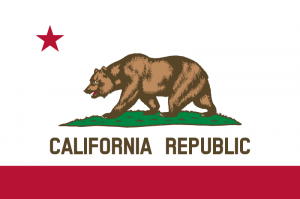 TALLEST LIVING THING: Hyperion, a 379-foot Sequoia (California redwood) tree located in the Redwood National Park near Eureka. Hyperion’s location in the park is kept secret to prevent it from being damaged by tourists.
TALLEST LIVING THING: Hyperion, a 379-foot Sequoia (California redwood) tree located in the Redwood National Park near Eureka. Hyperion’s location in the park is kept secret to prevent it from being damaged by tourists.
SMALLEST MOUNTAIN RANGE: The Sutter Butte Mountain Range near Yuba City. The buttes are a circular volcanic outcropping just 10 miles in diameter.
OLDEST LIVING TREE IN NORTH AMERICA: A 4,842- year-old bristlecone pine in Inyo National Forest outside Bishop.
Named Methuselah (after the oldest person whose age is referenced in the Bible), this pine was a seedling during the Bronze Age, when the Pyramids were going up in Egypt.
LARGEST LIVING TREE: General Sherman, a giant sequoia in Sequoia National Park, east of Visalia. Named for Civil War general William Tecumseh Sherman, this tree weighs more than 2 million pounds, is 275 feet tall, and is the largest tree on earth when measured by its estimated volume of 52,513 cubic feet.
BIGGEST SOLITARY BOULDER: Giant Rock in Landers in the Mojave Desert. At about seven stories high, it weighs more than 23,000 tons.
LONGEST RUNWAY: At Edwards Air Force Base in the Mojave Desert. It’s 7.5 miles long, and the first space shuttle landed there.
WORLD’S TALLEST ONE-PIECE TOTEM POLE: Built in 1962, the brightly painted 160-foot-tall pole in the McKinleyville Shopping Center was designed by Ernest Pierson, who carved it from a single 500-year-old redwood.
OLDEST CONCRETE BRIDGE STILL IN USE: Fernbridge in Humboldt County. Built in 1911 of reinforced concrete, it crosses the Eel River and is 1,450 feet long.
HIGHEST LANDING PAD ON A BUILDING: The U.S. Bank Tower in downtown L.A. is 1,018 feet high, making it the world’s tallest building with a helipad on the roof. It’s also America’s tallest building west of Chicago.
NORTH AMERICA’S BEST VIEW OF THE WORLD: The 3,849-foot summit of Mt. Diablo in Contra Costa County. It reveals more of the earth’s surface than any other peak in the world, except Mt. Kilimanjaro in Africa. Mt. Diablo looks west to the Farallon Islands in the Pacific, east to the Sierra Nevada mountain range, south to the Santa Cruz Mountains, and north to the Cascades.
NORTH AMERICA’S HIGHEST CONCENTRATION OF LAVA TUBE CAVES: Lava Beds National Monument near Tulelake.
The beds formed thousands of years ago when the exterior lava flow cooled and solidified, while the inner hot lava flowed away—creating an empty center and a cave.
NORTH AMERICA’S LARGEST ALPINE LAKE: Lake Tahoe is 12 miles wide, 22 miles long, and 1,645 feet deep.
CALIFORNIA’S HIGHEST MEASURED WATERFALL: Yosemite Falls in Yosemite National Park is actually made of three separate parts: Upper Yosemite Fall, Middle Cascades, and Lower Yosemite Fall together create a 2,425-foot waterfall.
AMERICA’S HIGHEST UNINTERRUPTED WATERFALL: Ribbon Fall is a single waterfall that flows off El Capitan in Yosemite and makes a sheer drop of 1,612 feet.
AMERICA’S LARGEST NATURAL AMPHITHEATER: The Hollywood Bowl. In 1922 it was built into the hillside (like the amphitheaters of ancient Greece and Rome) to aid acoustics.
FIRST ROSE BOWL: The first Rose Bowl game was held on January 1, 1902, at Tournament Park in Pasadena. Michigan defeated Stanford 41–0, when the Stanford players quit with just eight minutes remaining.
September 6, 2013
Weird Holiday: Fight Procrastination Day
We were going to run this article earlier today, but, you know…
 According to a recent study, the average American worker spends around two hours a day at work on activities not-related to work—in other words, goofing off, messing around, or procrastinating. This ends up costing employers millions in lost productivity annually. (Shame on you if you’re reading this at work.) This national “epidemic” spreads beyond work. Other studies show that putting off things you have to do anyway, such as paying bills or filing taxes, can drain hundreds of dollars from your bank account.
According to a recent study, the average American worker spends around two hours a day at work on activities not-related to work—in other words, goofing off, messing around, or procrastinating. This ends up costing employers millions in lost productivity annually. (Shame on you if you’re reading this at work.) This national “epidemic” spreads beyond work. Other studies show that putting off things you have to do anyway, such as paying bills or filing taxes, can drain hundreds of dollars from your bank account.
That’s why some concerned citizens have—wait. Hang on just a second. Let’s watch this video of a big cat trying to get inside a little box.
Heh-heh. That was neat. Where were we? Oh! Right.
Some concerned citizens have created a new, unofficial holiday called Fight Procrastination Day. This observance, which falls on September 6 this year, seeks to draw attention to and snuff out our collective tendency to zone out, waste time, and dink around, both on the clock and off. To “celebrate,” here are three FPD-recommended tactics that will help you stay productive and on task:
• Take off all your clothes. Seriously. To help themselves remain focused, famous authors like Victor Hugo and James Whitcomb Riley reportedly wrote while naked. Among other reasons, it discouraged them from wandering off to the nearest pub. Agatha Christie supposedly liked to write in her bathtub.
• First things first. If your workplace frowns on public nudity (and it probably does), try this: Tackle the toughest tasks on your agenda first thing in the morning. That way, the rest of your day will be a cakewalk by comparison. As self-improvement expert Dale Carnegie once said, “Do the hard jobs first. The easy jobs will take care of themselves.”
• Eliminate distractions. Can’t stop reading Twitter on your phone? Put it in a drawer. Do you check Facebook every 10 minutes? Use a web tool like Productivity Owl to help you stay on task—if you stray from a productive task and hit the Internet, an animated owl swoops down over your work and tells you to get back on track. Or try an Internet access blocker like Self Control, which prevents you from browsing the Internet for a set period of time
But old habits die hard, so if you absolutely, positively must procrastinate, at least try to better yourself while you do so, and learn something—pick up an Uncle John’s Bathroom Reader.
September 5, 2013
The Beatles: Reunited! (Sort of)
Even the bands whose members hate each other eventually reunite—Pink Floyd, Eagles, and the Police, for example. But the biggest band to never reunite is the biggest band of all: the Beatles. Except for those several times when the Beatles reunited. (Well, sort of.)
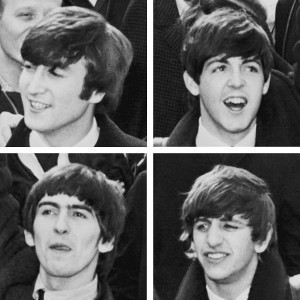 A Toot and a Snore in ’74 (1974)
A Toot and a Snore in ’74 (1974)
John Lennon and Paul McCartney were very hot and cold with each other after the Beatles broke up in 1970—they’d snipe at each in the press sometimes, while other times, they were friendly. For example, the night Lorne Michaels famously made his offer to pay the Beatles $3,000 to reunite on Saturday Night Live, Lennon and McCartney were actually watching the show, together, in Lennon’s apartment in New York, and almost went down to the show. But they only ever recorded together again once. In March 1974, Lennon had temporarily split with his wife, Yoko Ono, and had moved to Los Angeles. On March 28, he was at a Burbank studio producing Harry Nilsson’s Pussy Cats. That’s when Paul and Linda McCartney dropped by, unannounced. Lennon greeted McCartney by saying, “Valiant Paul McCartney, I presume?” McCartney responded, “Sir Jasper Lennon, I presume.” It was an inside joke—the lines were an exchange from a 1962 Beatles TV special. Before long, a jam sessions was underway—Lennon on guitar and lead vocals, McCartney on drums and harmonies. (And another drop-in, Stevie Wonder, played piano.) A bootleg of the session didn’t surface until 1992 under the title A Toot and a Snore in ’74, because Lennon repeatedly keeps asking for a “toot”—cocaine. The 26-minute recording is mostly chatter, but Lennon and McCartney play a bit of “Stand By Me” and “Sleepwalk.”
Ringo (1974)
Ringo Starr’s third album features all four Beatles…but never all of them at the same time. In addition to Starr’s presence on every track, of course, Lennon takes piano and George Harrison plays guitar on “I’m the Greatest,” Harrison is on “Photograph,” and McCartney plays kazoo on “You’re Sixteen.”
“All Those Years Ago” (1981)
In 1980, George Harrison wrote “All Those Years Ago” as a nostalgic look back at the Beatles, and to make it even more poignant, he asked Starr to play drums on it (he did; he turned down the chance to sing on it). A few weeks after it was recorded, however, Lennon was assassinated. Harrison rewrote the song to be more specifically a tribute to Lennon. Harrison sang lead, Starr played drums, and McCartney came in to add backing vocals. It hit #2 on the pop chart (kept out of the top spot by Kim Carnes’ “Bette Davis Eyes”).
“Free as a Bird” and “Real Love” (1995-96)
Obviously, there could never be a true Beatles reunion without Lennon. But as part of the Beatles’ Anthology TV documentary series and album releases in 1995, the three surviving band members united to add their voices and instrumental parts to do unearthed Lennon solo demos, “Free as a Bird” and “Real Love.” Both songs were top 10 hits.
Linda McCartney’s Memorial Service (1998)
McCartney’s wife and Wings bandmate, Linda McCartney, died after a long battle with cancer in June 1998. A private memorial service was held for about 700 people. No cameras were allowed in, and this was before the age of cell phone cameras. Otherwise, there would be footage of McCartney, Starr, and Harrison, who spontaneously gathered in front and led the congregation in a singing of the Beatles’ “Let it Be.”
September 4, 2013
Will the Real J.D. Salinger Please Stand Up?
The world’s most reclusive author is releasing a bunch of new books.
Can you figure out which ones they are?
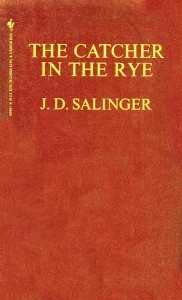 Catcher in the Rye author J.D. Salinger was as famous for being a recluse who never published much after his famous 1951 novel as he was for that seminal book. After Salinger died at age 91 in 2010, there was wide speculation that if he’d been writing during all those years holed up in his house in New Hampshire, scores of books might finally see the light of day. And now, they are. Salinger’s estate has been settled, and it includes detailed instructions regarding how he wanted five completely unseen books to be released.
Catcher in the Rye author J.D. Salinger was as famous for being a recluse who never published much after his famous 1951 novel as he was for that seminal book. After Salinger died at age 91 in 2010, there was wide speculation that if he’d been writing during all those years holed up in his house in New Hampshire, scores of books might finally see the light of day. And now, they are. Salinger’s estate has been settled, and it includes detailed instructions regarding how he wanted five completely unseen books to be released.
Fans have wondered for years what those books might be, and Uncle John is no exception. In Fake Facts, our book of completely made-up and silly trivia that sounds true but isn’t, we included a piece about imaginary lost works of Salinger called “The Salinger Vault.” Can you guess which of the following are books from the real Salinger vault that will soon be published …and which came from the phony Salinger vault in Fake Facts? (Answers at the bottom.)
1- A collection of allegorical tales about an ancient Indian religion.
2- A book of essays about his favorite foods, including peas and lamb burgers.
3- A series of short stories about the relatives of Holden Caulfield, the protagonist of The Catcher in the Rye.
4- A ‘70s-set sequel to The Catcher in the Rye.
5- A book about a family of ex-vaudeville performers.
6- A book about the craziness of signature collecting.
7- An autobiographical novella about Salinger’s time as a soldier in World War II.
8- A novel about a Nazi-fighting adventurer set during World War II.
9- An autobiographical novel about Salinger’s marriage while he was a solider during World War II.
Real Salinger: 1), 3), 5), 7), 9)





